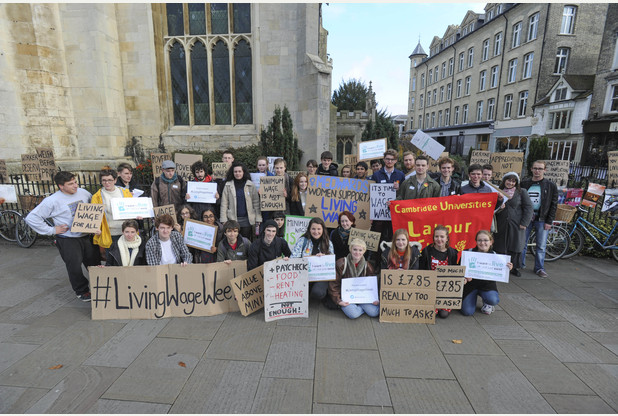The Living Wage is a women’s issue. 27% of women earn less than the Living Wage compared with just 16% of men. Part time jobs are much more likely to pay below the Living Wage and 43% of those that don’t are carried out by women.
And yet, so much of people’s “feminism” when it comes to women in work focuses on women breaking through the “glass ceiling”. As the Women’s Officer at Cambridge University put it at a Living Wage Week demonstration, what about the “glass cellar” that traps women at the bottom? To these women, it is not representation in boardrooms that is the issue, it is surviving.
Where is the feminism for them?
I go to Cambridge, where there is a thriving feminist movement made up of supposedly some of the “brightest young minds in the country.” And yet even here, most people’s feminism focuses on the “ceiling” and not the “cellar”. The reason for this is obvious: most students here come from a very privileged background and are thus far more concerned about, or even simply aware of, the barriers they will face in their own careers than those faced by those women “below” them.
 Cambridge University’s Living Wage Campaign - photo credit to Cambridge News
Cambridge University’s Living Wage Campaign - photo credit to Cambridge News
They want to know that they will be able to become executives and earn top salaries, not that the women (and the majority of these people are women) who serve them food, empty their bins and clean their room are able to earn a decent salary on which to live comfortably.
There is a bitter irony in the moments when women here sit around tables and in armchairs talking about “feminism”, seemingly unaware that they are eating food and drinking wine produced and served to them by women who are earning poverty wages.
The tagline of the national Living Wage campaign is “I want to live, not just survive.” As feminists, we need to create a feminism that enables all women to live. Unfortunately, some of us aren’t even surviving at the moment.
By Daisy Hughes
ga('create', 'UA-58700725-1', 'auto'); ga('send', 'pageview'); // ]]>